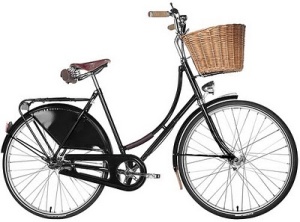What is up with the vintage fever? I think that some people are going crazy over it. I see it from two perspectives:
It is nice to recycle, be more sustainable, think about our planet -be “green”.
However, some people “go vintage” just because the “looks” of it. Ok the style is nice and always, when there is a crisis, when our world is falling apart, we tend to recur to the idiom “good old days” -vintage is better.
Today I was riding my “new” bike -bought from a guy, which bought it from another guy- and I had infront of me a “vintage new” bike. Well, the seat looked uncomfortable, I bet it had cost a small fortune, and then comes the sustainable part of the “vintage fever”. This girl did not recycle an old bike because of nostalgia, she bought it brand new because of its looks.
Is it not the main point of buying vintage to recycle, to help our planet, to reduce consumerism? Well, if you buy a “new vintage” you are destroying the whole point.
I am happy as hell with my “new” road bike, with my soft silicone seat, my 8 gears and my disc brakes, and my 11kg bike -try to ride Aarhus’ “little hills” with less than 8 gears and more weight… How much did I pay? 150€. And then, try to ride with an uncomfortable leather seat -hard as hell, 3 gears, no disc brakes, and 18kg of bike -700€ minimum.
So, what is the point of going backwards? Vintage is nice but do not be stupid. If it has the looks, the price and the comfort -go for it, if not…well, you might answer the questions yourselves.

